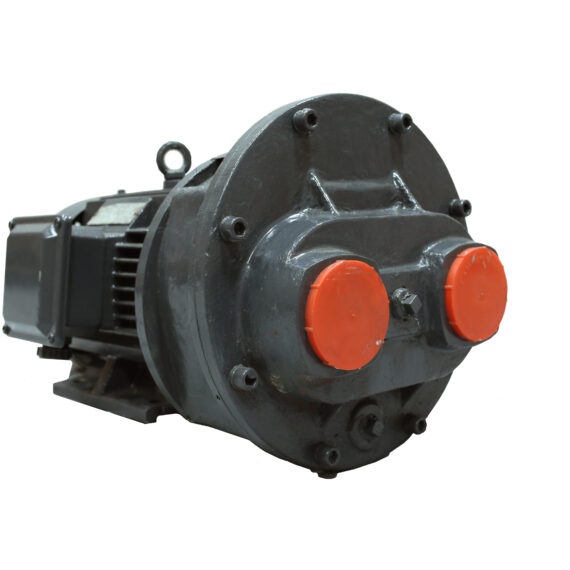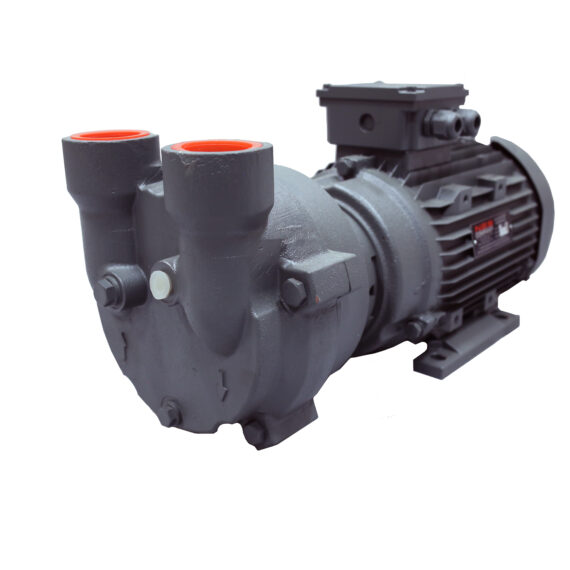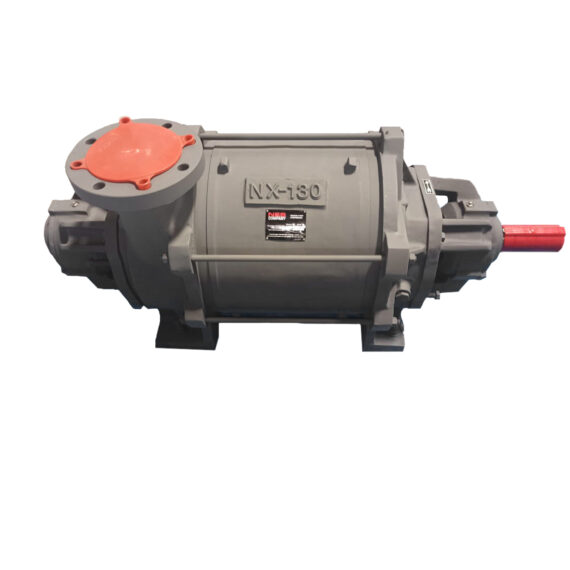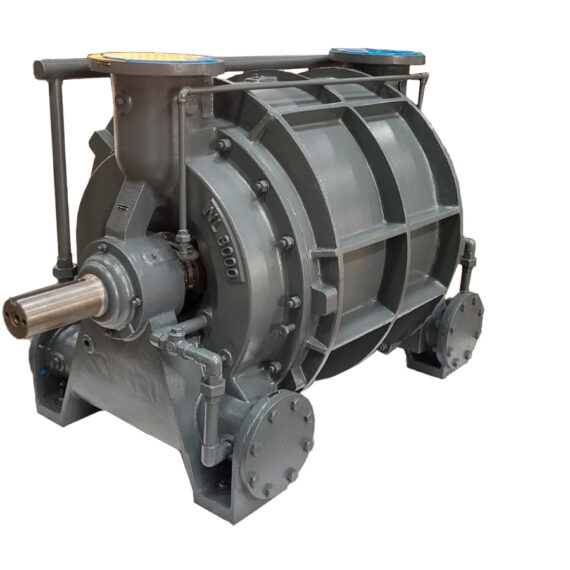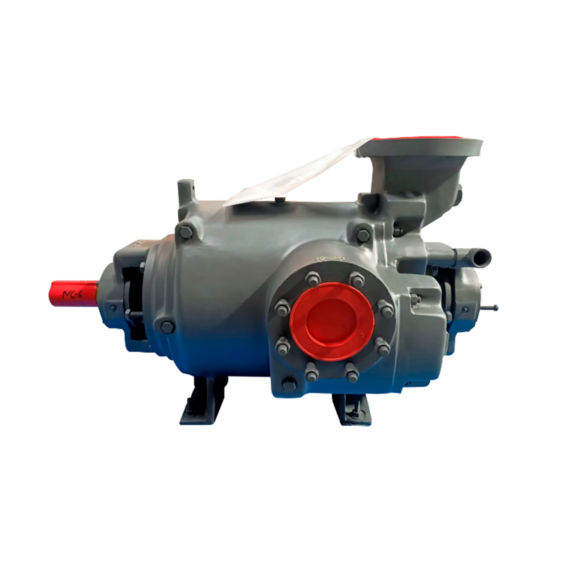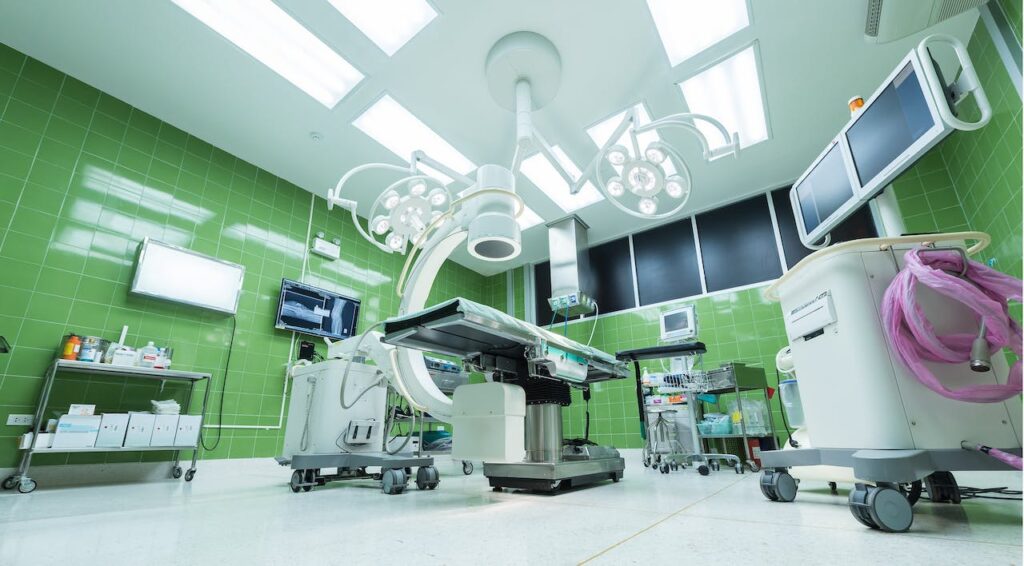
Medical Health Services Liquid Ring Vacuum Pump & Compressors
A typical medical institution has a vacuum pump in the basement of the building. This pump creates a strong vacuum in a receiver tank that is connected to multiple pipes running all throughout the institution.
The receiver acts as a kind of battery, “recharging” through gaining deeper negative pressure from the vacuum pump that it is attached to. Once the receiver tank reaches a certain vacuum pressure, it is only maintained and not increased. Whenever suction is needed throughout the hospital, the individual pipes open and suction from the receiver tank reaches through the pipe, sending its suction through the “wires” of this piping circuit as the higher pressure of the atmosphere rushes to the receiver tank. Whenever the tank falls below 19” Hg the pump turns on, and above 25” Hg the pump turns off. Usually tanks are connected to two pumps so that one can shut down for service and repair. These pumps need to be capable of delivering uninterrupted strong negative pressure. This piping circuit is designed to pull air, but it is inevitable that it pulls fluids, solids, and aerosols on a daily basis.
Vacuum-assisted wound closure (VAC) is a therapy used to aid in closing open wounds. Atmospheric pressure inflicts force on open wounds, delaying the rate at which it is able to heal. Airborne bacteria also have free way with the wound, infecting it. With the removal of this pressure and the suction of bacteria that have been drawn to the open wound, the healing process accelerates. VAC can reduce swelling and infection, as well as pulling the edges of the wound closer together to heal and close faster. The wound is covered in gauze and adhesive with a vacuum tube underneath. Vacuum is applied either in cycles or constantly. The dressing is changed every 1-3 days and the therapy is applied until the wound closes.
Liposuction is the removal of subcutaneous fat. This can be for medical or cosmetic reasons. There are various kinds of liposuction, but it generally involves liquefying the fat and suctioning it out. Liquefying can be done through ultrasonic vibration or laser. The longer the procedure, the more blood is lost, so the vacuum applied must be constant and quite strong.
In positive pressure cleanrooms, the clean room is higher than atmospheric pressure. As a result, air from outside does not creep in. Suspended particulate matter, bacteria, and viruses will not be able to enter. For this reason, positive pressure cleanrooms are used to protect a patient from any external stimuli, such as allergies or cold, which would severely and potentially fatally affect an immunocompromised patient. In negative pressure clean rooms, the clean room is subjected to subatmospheric pressure, so none of the air in the clean room comes out. This is useful to contain certain contagious or infectious diseases and viruses such as COVID 19. A negative pressure is created by severely limiting the air that is able to come in, but using a vacuum pump to pump all of the air out through underground ducts to a receiving tank.
Steam sterilization is an inexpensive, effective, safe way to sterilize medical equipment. The autoclave, or steam sterilization instrument, is loaded with unsterilized equipment. The chamber is emptied of air using a vacuum pump, which also draws steam in. The steam is incredibly hot, which denatures and coagulates the enzymes and structural proteins of bacteria. Once the equipment is clean, the vacuum is activated once again to absorb all moisture from the chamber. Bacteria grow well in damp, dark, cool areas so having the chamber be as dry as possible when it is not in use is very important.
View our Products
Applications of Liquid Ring Vacuum Pumps
Based on the aforementioned applications, medical health services applications require a wet-running pump that will not be affected by various small solids and liquid passing through. Blood, organic material like skin and hair, dust, pus, and fat pass through the suction piping and the vacuum pump. The vacuum needs to be NFPA 99 compliant, considering protection against accidents concerning fire, explosion, electricity, and infectious diseases. As a result, the pump needed is a robust, wet-running, NFPA 99 compliant, explosion proof, corrosion resistant, consistent suction liquid ring vacuum pump. There are numerous NFPA 99 compliant liquid ring pumps, as they are widely used in the present day. They are able to pass slugs of liquid, particulate solids, and gasses simultaneously with little to no effect on its constant suction. They are easy to maintain and service thanks to both the small number of parts and robust chamber walls and impeller vanes, meaning that the downtime for one pump in the basement system will not be very long if it is in need of repair or maintenance.
Vacuum assisted closure requires the suction of blood, pus, dead skin, and scabs. These kinds of solids would inevitably build up and eventually clog a dry-running pump, but the liquid ring passes everything in and out. The vacuum can get quite deep but is controllable through the direct motor horsepower and planning for piping. This way, the correct amount of suction will be applied for open wounds not to reopen, but rather to be pulled together and eventually closed after consistent sessions.
Liposuction involves even more blood, as well as viscous liquids like liquified fat. Depending on the method, the suction will be pulling in anesthetics, epinephrine, lidocaine, and other medications that need to be properly contained and disposed of. Whether gaseous or liquid anesthetic, the liquid ring vacuum pump is able to properly draw in and compress the medication for safe, complete storage until it is properly disposed of.
Negative pressure clean rooms have been very helpful, especially recently with the COVID outbreaks. The vacuum pressure needs to be very strong for proper containment, filtration and elimination of harmful airborne particles, such as coronaviruses or influenza viruses. The dual-stage liquid ring vacuum pump is able to achieve near-vacuum conditions, allowing for complete containment of “infected air” and renewal of fresh air within the clean room within minutes depending on the CFM and inlet conditions.
Autoclaves have been in use all over the world, but particularly in hospitals. Liquid ring vacuum pumps are in widespread use for their constant deep suction, making steam sterilization quicker and more thorough. The steam and moisture is the sterilizing agent, so without it, there is no purpose in this machine. Dry-running pumps will not be able to perform this kind of pumping process, however, as many of them are extremely sensitive to moisture and, as a result, are limited in function and service life. The liquid ring vacuum pump is able to provide suction for all of the moisture, as well as any dirt or dust that is cleaned off of the equipment by the steam, without any effect on vacuum pressure. The steam condenses in the chambers of the liquid ring vacuum pump, allowing for more steam and air to be drawn in. This application in particular is extremely efficient using the liquid ring.

